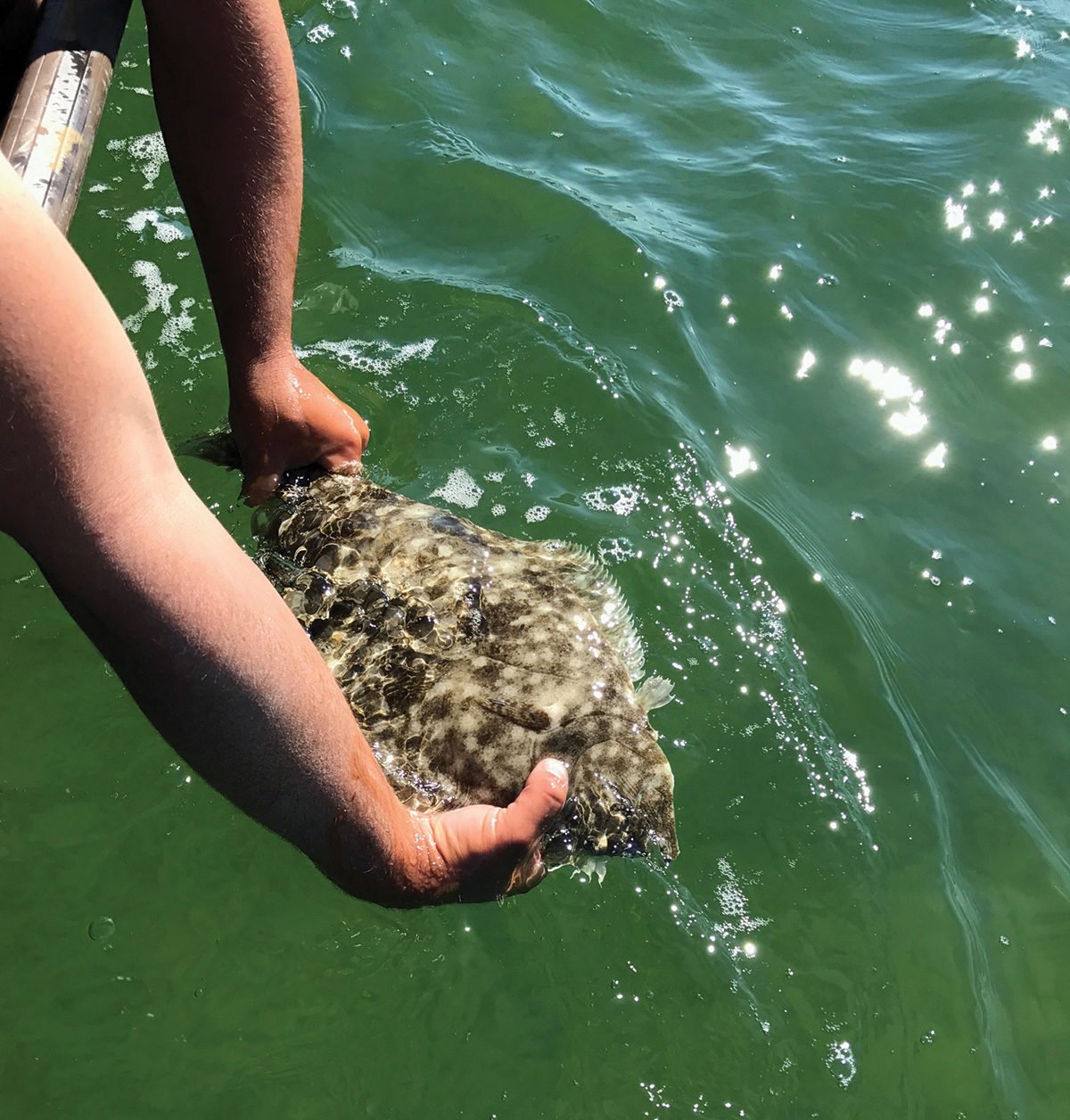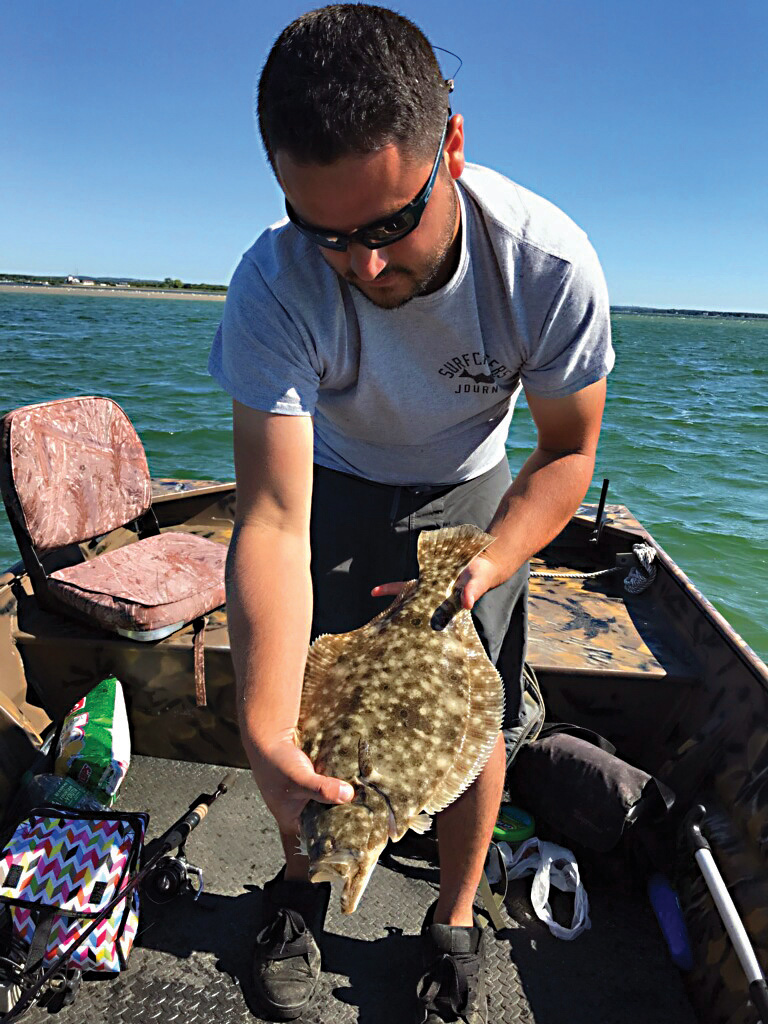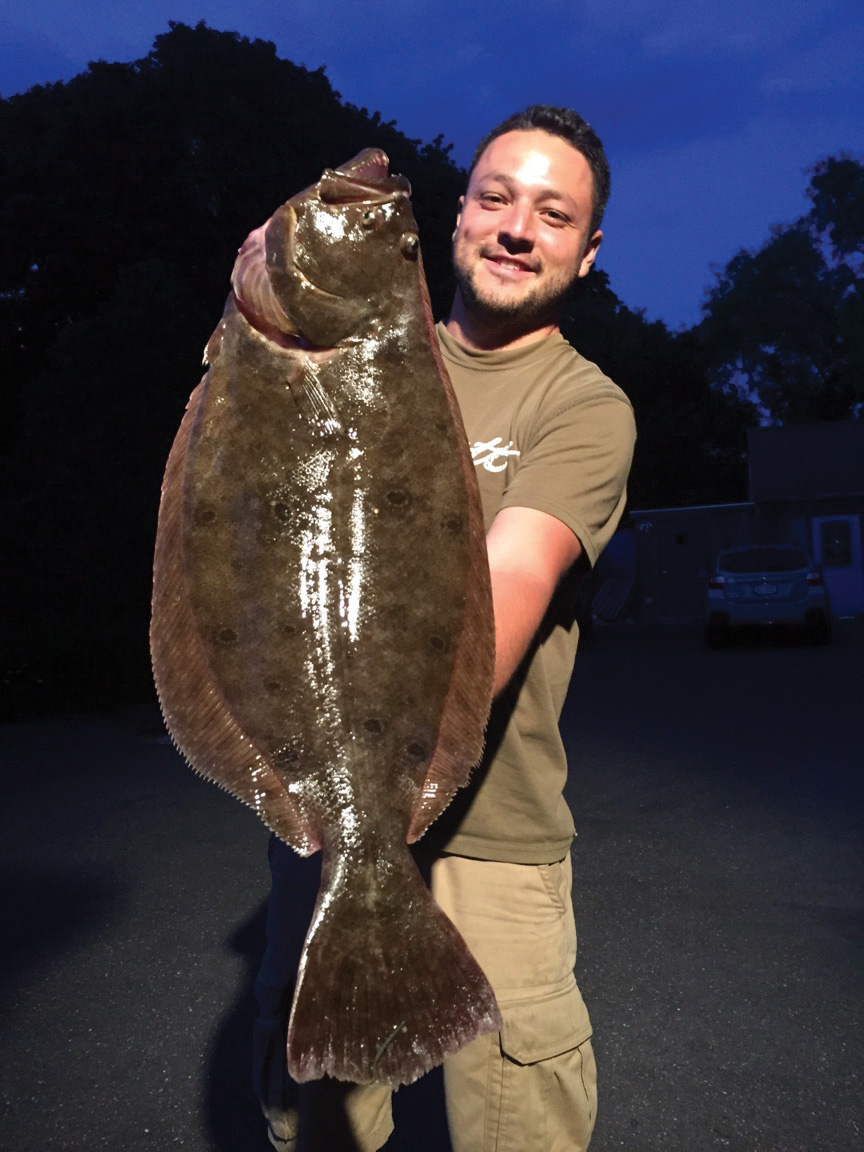
While much of the late season action runs deep, don’t ignore the shallow stuff.
It was a calm August morning with little wind and the start of outgoing tide as I eased my boat across the glossy looking bay. After I failed to connect with any stripers or blues in the main channel I noticed a few terns picking away at sand eels coming off a sandbar. With the thought of bass on my brain I quickly started casting a few plugs around the diving birds hoping to intercept.
On my third cast however I noticed a rather large fish following my lure back to the boat. This fish also appeared brown as opposed to the long black back of a striper. It didn’t take long to realize that the fish following my plug was a fluke, and I quickly switched gears to a lighter spinning outfit matched with a 1/2-ounce bucktail. Within minutes I was hooked into my first keeper of the trip and within an hour I had my limit.
What was even more amazing was that virtually all the fish I had been catching came from water of less than 10 feet. Ever since that day, I’ve paid a lot closer attention to shallow areas, and you should too.
Structurally Speaking
For the first timer learning how and where to fish, shallow water can be intimidating. With so many miles of fish holding potential where does one begin in terms of finding productive areas? My answer is simple, and that is to find some sort of structure. But finding structure on a shallow flat sometimes isn’t as easy as it seems, but knowing what to look for can help a great deal.
Flats generally appear pretty consistent in that they look like what they are, a massive flat of sand. Walk out on a high tide or drive over one slowly however, and you’ll quickly realize that it’s far from truth. Small pockets and depressions run through a flat that one would never know were there unless they went to see it for themselves. It’s these areas where sometimes the biggest fluke lay on higher tides waiting for bait to get washed over.
Also on days where the water is clean, watch for color changes. A lighter color indicates a shallower area whereas even the slightest change in color can show you where the deeper pockets in shallow areas are. For instance if you fish a flat and notice the water color going from a light tan to a shade or two darker of the same color, it may be worth fishing within that contour. Season after season these areas are where a big portion of my keeper fluke come from, and I have to say it’s really cool being able to physically watch the entire process unfold as a fish eats my bucktail.

Bait Is the Key
I put a lot of emphasis on bait because without it, even the best looking structure seldom holds any fish. When concentrating on bait, I like to think in simple terms because this type of fishing shouldn’t be complicated. Understanding the concept of “Find the bait and find the fish” and you’ve already eliminated half of the guess work. Of course there have been times that I’ve used my structure logic to find fish, but more often than not I’ve done my best with finding fluke in shallow water by focusing on areas with a good amount of bait.
Fluke by nature are ambush predators so try fishing spots that you know hold a lot of bait in shallow water as a starting point. I bet by doing this, you’ll be surprised in how shallow of water your hits come when a large amount of bait is present. It’s also not uncommon in these areas to hook up quickly and often once you’ve located the fish.
General signs of bait can be as easy as birds occasionally diving on a sandbar, or watching the water closely to see if it shimmers or flickers in the light. I have found that bait such as sand eels will have some sort of bird activity on them whereas bait such as peanut bunker sometimes flicker and look like big dark patches sometimes mistaken for seaweed moving across a sandbar. The point here is to throw a bucktail whenever you find a large concentration of bait as it will more often than not be holding fluke somewhere in close proximity to it.
Game of Tides
I could sit here all day and go back and forth on which tide is the better of the two and why but honestly when it comes to fishing the shallows, I’ve found it differs from spot to spot. What I mean by this is simply stating that each area is different and conditions are always changing. Perfect example would be a few years ago on a spot I fish heavily, the incoming tide far out produced the outgoing, whereas a season later the outgoing reigned supreme.
For starters I go back to my main point that things are always changing. Sandbars appear or disappear after any good storm rolls by and from one week to another could bring in a completely different kind of bait to the area. The point here is you’ll have to experiment a bit and see which tide produces better. Plan your fishing on either the first or last hour of either tide going into slack water. These are the times where I typically find my biggest and best fish and these sessions don’t last long, but they make up for it with quality and quantity. Also keep in mind that since we’re talking about shallow water, if you’re in a boat don’t get caught in an area you can’t get out of as the result of a rapidly dropping tide. Watch the tides closely, use your best judgment for safety, and then head out.
It’s crazy to even think that the bright sunny beach days of summer are slowly creeping into fall on the not so distant horizon. With that being said there’s still plenty of time before the fish move out of the bays so take advantage of it while you can. I always like to think of this as getting my last licks of summer in before my attention starts to shift towards the fall run. Summer’s not over, and the fluke fishing is still there for the taking, but it won’t last forever. If you find yourself up for the challenge grab a few bucktails, some Gulp, a light spinning rod, and give this type of fishing a try. Whether it be casting from shore or stalking the flats in a bay boat, shallow water fluke fishing now has a special place in my heart.

| KEEP AWAY: THE BIRDS |
|---|
|
I generally like to keep my distance from the sea robins for a few obvious reasons; primarily what I’ve found (and I’ve watched this happen first hand) is that even when a fluke is following your offering, if there’s a sea robin even remotely near the area, he’ll beat the fluke to the bait 90 percent of the time. Maybe it’s because in recent years the larger abundance of this species has caused them to be more competitive and aggressive due to their seemingly overwhelming numbers? This I don’t have an answer for but I will say that the majority of my best shallow water fluke fishing happens with little to no interruption from sea robins. – B. Detwiler |




